French Girls Loves Optimization
How many times have you seen Titanic? Enough to remember the moment Rose tells Jack to “draw me like one of your French girls”? Well, a group of iOS developers from Scranton, PA remember… and they created an app inspired by it. The app has risen in popularity over the last year, surpassing 1 million downloads in July 2014. With A/B testing, French Girls’ lean team is turning the majority of those downloads into actively engaged, activated users. Here’s how they’re doing it, lessons they’re learning along the way, and why they named the app French Girls.

Cara Harshman
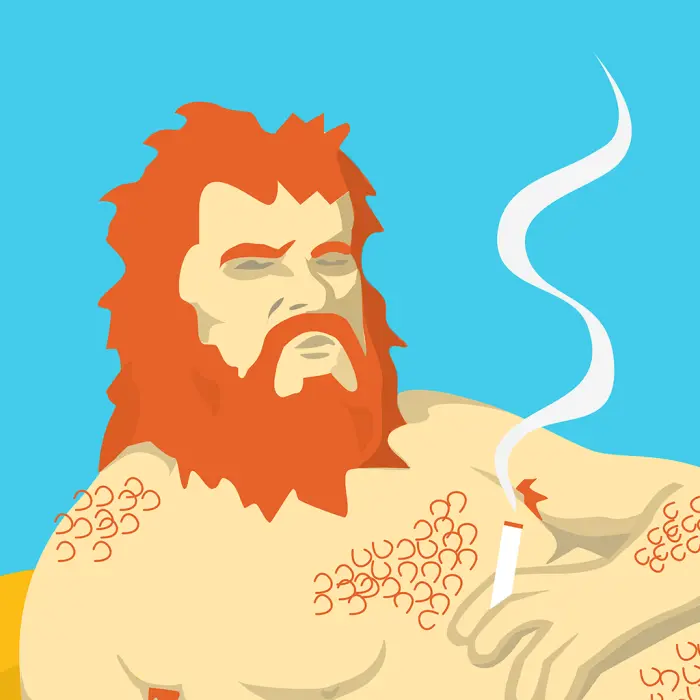
How many times have you seen Titanic? Enough to remember the moment Rose tells Jack to “draw me like one of your French girls”? Well, a group of iOS developers from Scranton, PA remember… and they created an app inspired by it.
Meet French Girls, an iOS app that is latching on to a vibrant photography phenomenon: the selfie. The idea for the app is users take selfies and then make illustrations of other people’s selfies. Quality ranges from amateur stick figures to truly impressive and highly interpreted portraits—and more often than not, inspiration from cats. (Bonus at the end of the post: how French Girls got its name.)
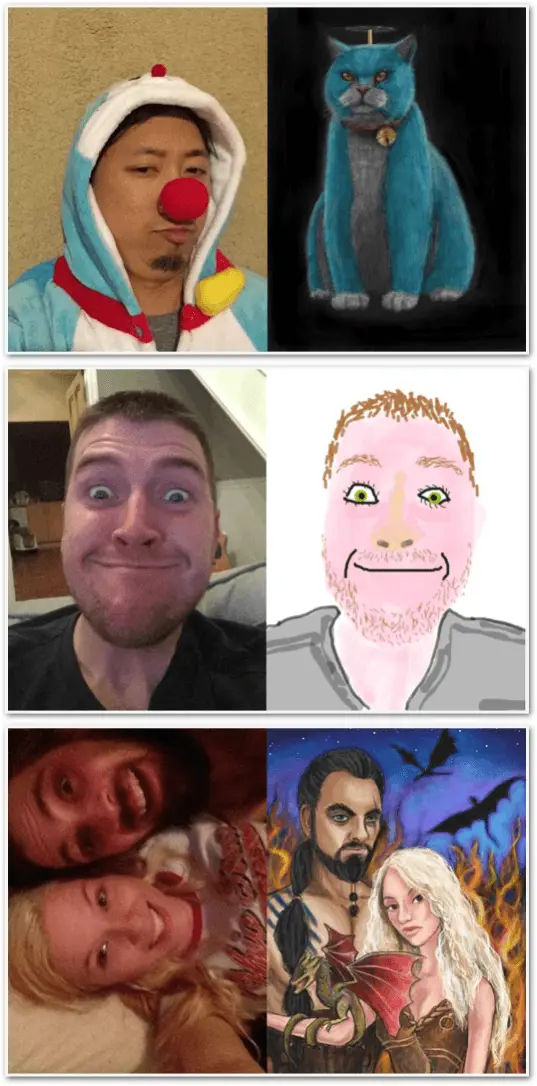
Examples of what happens on French Girls.
The app has risen in popularity over the last year, surpassing 1 million downloads in July 2014. With A/B testing, French Girls’ lean team is turning the majority of those downloads into engaged, activated users.
Through iOS A/B testing, French Girls increased activation from 25% to 66.5% and fundamentally changed how they develop features.
Optimizing user onboarding for activation
Activation—turning someone who has downloaded an app into an active user—is a key metric to obsess over because it is deeply connected to retention and indicates the quality of the first-time user experience. A user is usually considered activated after crossing a threshold of activity, like creating an account, filling out a profile or making a purchase.
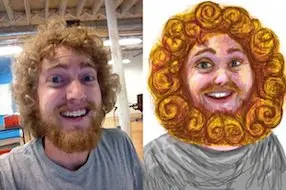
This is Jeff.
“For us, activation is directly correlated to retention,” says, Jeff Farkas, a developer and backend architect on the team. “Without activation, retention is poor.”
French Girls considers users activated after they complete two tasks: take a selfie and draw a selfie.
Before activation is possible, education is necessary. During the first run experience, people must learn how the app works in order to see the value of opening it again… and again.
“Our first-time user experience required users to complete a drawing of another person’s selfie and take a selfie before proceeding to use the app,” Farkas said. “This was our activation metric, as we saw people that were fairly well retained after this process.”
They knew that non-activated users would come to browse selfie portraits then stop opening the app after a day or two. Activated users would stick around for up to seven days. The problem: their activation success was low—only 25% of people who downloaded the app actually took a selfie and completed a drawing.
The team decided to test their activation experience and learn which new combination of images and messages would activate the most users.
Jeff knew they needed a tutorial to teach people how to use the app but didn’t know what order of actions or messaging would be most effective. So they tested it. The team designed different first-time user experiences and measured the impact each one had on activations.
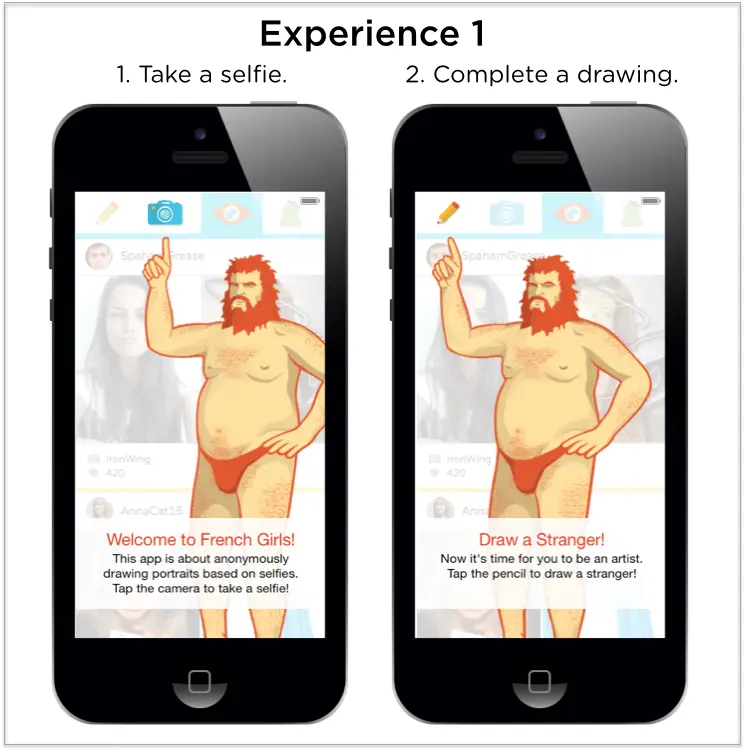
In Experience 1, users were directed to take a selfie first and then draw a portrait.
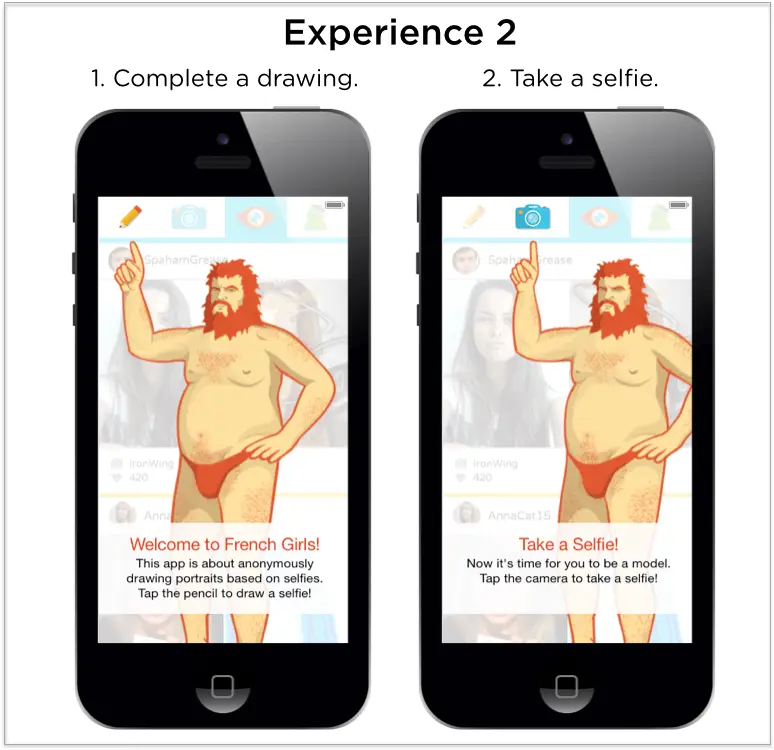
In Experience 2, they flip the order: first, draw a selfie, then take a selfie. “It is a high barrier-to-entry method, but makes the user feel invested in the platform,” Farkas said.
They found that Experience 1 (take a selfie then draw a portrait) doubled activation conversion to 50%. From there, they moved on to testing the tutorial messaging. Turns out that slight differences in tone and style had a strong effect on conversion. Here’s what they tried:
-
Original: Draw a stranger! Now it’s time for you to be an artist. Tap the pencil to draw a stranger!
- Photo First No Pressure: Draw a stranger! Tap the pencil to draw a stranger. Don’t worry, it doesn’t have to be a masterpiece! Have fun!
- Photo First No Pressure 2: Draw a stranger! Now let’s draw somebody. You don’t have to be a great artist, just have fun!
- Photo First No Pressure 3: Draw a stranger! Tap the pencil to draw a stranger. You don’t have to be a great artist, just have fun!
- Photo First No Pressure 4: Let’s draw! Tap the pencil to draw a stranger. Don’t worry, it doesn’t have to be a masterpiece! Have fun!
- Photo First Ridiculous: Let the art commence. Summon your greatest abilities and draw a stranger. You have the chance to make someone’s day!
Experience #4, (Draw a stranger! Tap the pencil to draw a stranger. You don’t have to be a great artist, just have fun!) led to another 16.5% increase in activation.
Influencing app engagement & team culture
While the app looks a bit different today (unfortunately, their hairy man mascot, Scotch Mornington isn’t guiding folks through the tutorial anymore), this series of tests was pivotal in laying the groundwork for the app’s growth.
- Increasing conversion of the tutorial led to a better ecosystem where users understood the value proposition of the app.
- More people were willing to take and draw selfies, and spend money on in-app purchases.
This test also sparked a major shift in feature development at French Girls.
“Optimization had always taken a back seat over features in terms of priority,” Jeff said. “Since the proven success of Optimizely, optimization is no longer an afterthought, but a necessary part of every feature. It forces us to consider not only how users use a feature, but why they use it and what value it offers to them.”
Today, every product decision the team makes is based on user feedback backed by statistical evidence. They have expanded their toolset to include Google Analytics, Mixpanel, and Redshift for business intelligence.
“Optimizely has played a huge part in opening our eyes to how important analytics and optimization is to the success of our app,” Jeff said.
Bonus: Naming French Girls
The idea for French Girls came before the name. At their HQ in Scranton, PA, co-founders Andrew, Adam, and their lean team of seven, organized a weekend Hackathon with one goal: submit a new iOS app to the App Store. Many cans of Mountain Dew later, the team had a prototype for an app that allowed people to take pictures and add them to a pool of all other pictures taken in the app. Then, people could pick a random picture, draw whatever they desired (a message, a picture, etc.) on a white screen with their finger, and send it back to that person.
All it lacked was a name. Ideas like DrawingBash, FaceSmash, FaceDraw covered a whiteboard, but none seemed quite right.
“They were all pretty bad,” Jeff Farkas, the backend architect on the team admitted. “But then Andrew (CTO) walked into the office with such an air of confidence. He walked right up to the board and scrawls, “French Girls” across the other names. Everyone is looking around the room, shooting puzzled looks at each other, trying to figure out why the heck we would call this app French Girls. And then he says, “Draw me like one of your French Girls.” and strikes a pose. It was brilliant.”
Double Bonus: Reasons I love French Girls and opted in to push notifications
- They are fearless and hilarious. Even their app update explainer text made me laugh out loud and show all my friends.
- They suggest a ridiculous username for you in the onboarding flow so you don’t even have to think about it.
- There are hidden Easter eggs all over the app.
- They make subtle references to the Titanic throughout the app.
- They are committed to testing and know it’s necessary to build great experiences.

